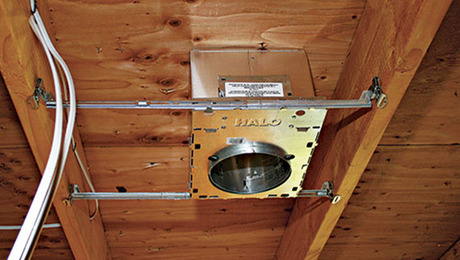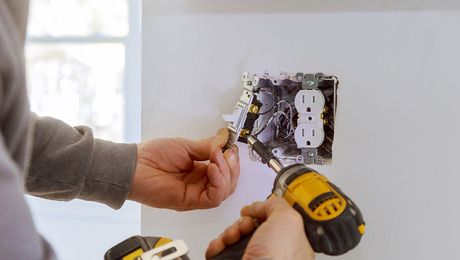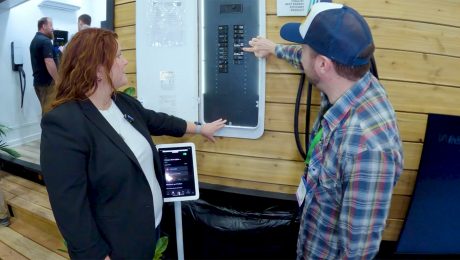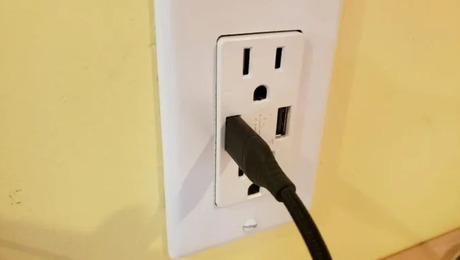Locate Top and Bottom Plates for Wiring
Use this trick to find into which stud bay you need to drill a hole to run a wire for a new switch or outlet.

I’ve been using this trick for locating exactly into which stud bay I need to drill a hole for running a wire for a new switch or outlet. To get started, locate where in the wall you want to run your wire, and use a 1/8-in.-diameter by 12-in. drill bit to drill a hole so that the business end of the long bit lands in the middle of the top or bottom plate. A stud finder can help you locate the hole between joists (at least at the ceiling if the framing isn’t stacked).
You can usually see where the bit lands in the attic or basement, but if you want to make things even easier, remove the bit and shove in a longer wire painted with fluorescent paint through the hole. Once you locate the wire, drill your final 3/4-in. hole at 90° through the plate and run your final wire. A dab of putty or caulk is often enough to hide your locator hole.
— Marcus Zehnder; Overland Park, Kan.
From Fine Homebuilding #310
RELATED STORIES
Got a Tip?
Do you have any great tips like this one on locating the top and bottom plates for wiring? Share your methods, tricks, and jigs with other readers. Tag them @FineHomebuilding on social, email them to us at [email protected], or upload them to FineHomebuilding.com/reader-tips. We’ll pay for any we publish.






























View Comments
Excellent tip. I've been using a similar trick for years (without the angle). I drill perpendicular to the ceiling or floor and measure over to get to the center of the plate. When working with drywall ceilings, a drill is not even needed, as a coat hanger can be wiggled and pushed through the drywall.
I just cut a piece of heavy coat hanger wire and use that as a drill bit to find studs, plates or beam behind drywall. Leaves a tiny hole that's easy to patch. It's no great loss if it gets displaced (which it usually does).